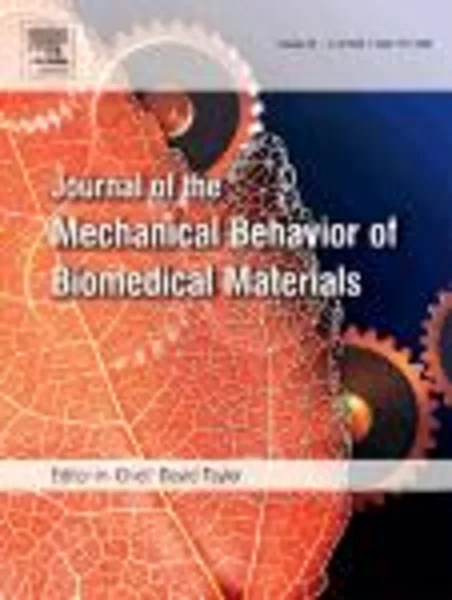-
a coarse-grain molecular dynamics model for sickle hemoglobin fibers
جزئیات بیشتر مقاله- تاریخ ارائه: 1394/01/01
- تاریخ انتشار در تی پی بین: 1394/01/01
- تعداد بازدید: 750
- تعداد پرسش و پاسخ ها: 0
- شماره تماس دبیرخانه رویداد: -
the intracellular polymerization of deoxy-sickle cell hemoglobin (hbs) has been identified as the main cause of sickle cell disease. therefore, the material properties and biomechanical behavior of polymerized hbs fibers is a topic of intense research interest. a solvent-free coarse-grain molecular dynamics (cgmd) model is developed to represent a single hemoglobin fiber as four tightly bonded chains. a finitely extensible nonlinear elastic (fene) potential, a bending potential, a torsional potential, a truncated lennard-jones potential and a lennard-jones potential are implemented along with the langevin thermostat to simulate the behavior of a polymerized hbs fiber in the cytoplasm. the parameters of the potentials are identified via comparison of the simulation results to the experimentally measured values of bending and torsional rigidity of single hbs fibers. after it is shown that the proposed model is able to very efficiently simulate the mechanical behavior of single hbs fibers, it is employed in the study of the interaction between hbs fibers. it is illustrated that frustrated fibers and fibers under compression require a much larger interaction force to zipper than free fibers resulting in partial unzippering of these fibers. continuous polymerization of the unzippered fibers via heterogeneous nucleation and additional unzippering under compression can explain the formation of hbs fiber networks and consequently the wide variety of shapes of deoxygenated sickle cells.
مقالات جدیدترین رویدادها
-
استفاده از تحلیل اهمیت-عملکرد در ارائه الگوی مدیریت خلاقیت سازمانی و ارائه راهکار جهت بهبود
-
بررسی تاثیر ارزش وجوه نقد مازاد بر ساختار سرمایه شرکت های پذیرفته شده در بورس اوراق بهادار تهران
-
بررسی تأثیر سطح افشای ریسک بر قرارداد بدهی شرکت های پذیرفته شده در بورس اوراق بهادار تهران
-
بررسی تأثیر رتبه بندی اعتباری مبتنی بر مدل امتیاز بازار نوظهور بر نقد شوندگی سهام با تأکید بر خصوصی سازی شرکت ها
-
تأثیر آمیخته بازاریابی پوشاک ایرانی بر تصویر ذهنی مشتری پوشاک ایرانی (هاکوپیان)
-
بهینه زاویه آبگیر در قوس 90 درجه همگرا در حضور ذرات شناور چوبی
-
مروری انتقادی بر نحوه ارزیابی سرمایه فکری
-
مقایسه تجربی رفتار خارج از صفحه سقفهای طاق ضربی تقویت شده
-
بررسی توان اکولوژی استان خراسان رضوی برای تثبیت جمعیت و جلوگیری از مهاجرت ها با رویکرد آمایش سرزمین
-
ارزیابی عوامل خطرساز بروز نارسایی حاد کلیه در جراحی آنوریسم آئورت شکمی
مقالات جدیدترین ژورنال ها
-
مدیریت و بررسی افسردگی دانش آموزان دختر مقطع متوسطه دوم در دروان کرونا در شهرستان دزفول
-
مدیریت و بررسی خرد سیاسی در اندیشه ی فردوسی در ادب ایران
-
واکاوی و مدیریت توصیفی قلمدان(جاکلیدی)ضریح در موزه آستان قدس رضوی
-
بررسی تاثیر خلاقیت، دانش و انگیزه کارکنان بر پیشنهادات نوآورانه کارکنان ( مورد مطالعه: هتل های 3 و 4 ستاره استان کرمان)
-
بررسی تاثیر کیفیت سیستم های اطلاعاتی بر تصمیم گیری موفق در شرکتهای تولیدی استان اصفهان (مورد مطالعه: مدیران شرکتهای تولیدی استان اصفهان)
-
آینده پژوهی در معماری تبیین رویکردهای آینده پژوهانه در حوزه طراحی مسکن
-
نگاهی به بررسی پیامدها ، آثار و تبعات اجتماعی سوءاستفاده از زنان
-
تحلیل عوامل تاثیرگذار بر فطرت
-
بررسی وضعیت حقوقی استفاده ازموشکهای بالستیک توسط ایران و انطباق آن با مقررات بین المللی
-
numerical simulation of impulsive water waves generated by subaerial and submerged landslides incidents in dam reservoirs




سوال خود را در مورد این مقاله مطرح نمایید :